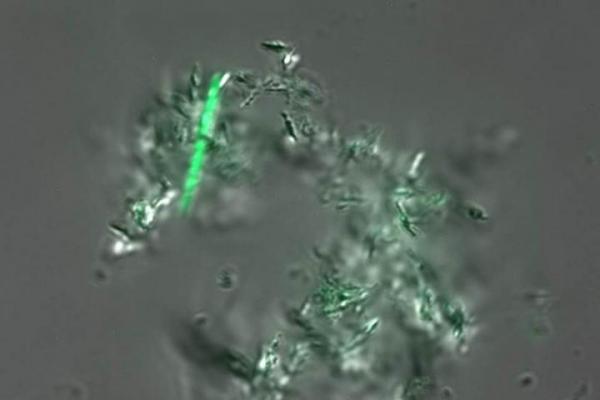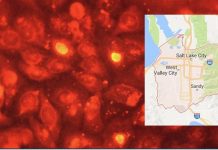
PHILADELPHIA, Aug. 22 (UPI) — The standard test for tuberculosis is well over 100 years old, and can be slow and difficult in remote locations, but researchers working to improve the test may have an easier way.
Researchers from Stanford University plan to unveil the first results from field trials of a new tuberculosis test at the American Chemical Society’s fall meeting in Philadelphia, with the expectation that using dyes to test patients’ fluids may be faster and more reliable than the standard method.
The Ziehl-Neelsen test, developed in the 1880s, is an 11-step procedure testing a saliva sample, which is exposed to dye and then rinsed several times over the course of many hours. Aside from the resources required to process the test, it’s sensitivity is suspect — the test can miss cases of tuberculosis, as well provide false positives, researchers say.
Additionally, the old test can’t detect whether drug treatments are working, meaning it can be more difficult to treat patients and ineffective treatments may contribute to increasing drug resistance of bacteria causing tuberculosis.
“If the drugs aren’t working, you want to switch the patient to the next treatment as quickly as possible so you don’t contribute to drug resistance,” Dr. Carolyn Bertozzi, a researcher at Stanford University, said in a press release.
Using a combination of the glycolipid sugar trehalose and a solvatochromatic dye, Stanford researchers found samples of sputum — a mixture of mucus and saliva — with Mycobacterium tuberculosis present glow green when absorbed into bacterial cell walls.
Unlike the traditional test, however, the new version only reacts to live bacteria, where the old one identified all bacteria in a sample, alive or dead. Samples react within an hour, and just a microscope is needed to confirm the presence of tuberculosis-causing bacteria.
The new sputum test is not the only one in development at Stanford, as researchers there have also been investigating a urine test for patients who can’t produce sputum for the test or for whom it may be difficult, such as children.
With about 9.6 million people contracting tuberculosis in 2014, and around 1.5 million dying from it that year, researchers say finding a reliable test is essential.
“One-third of the world’s population is currently infected with TB,” Dr. Purvesh Khatri, an assistant professor of medicine working researching tests for the disease, said in February. “Even if only 10 percent of them get active TB, that’s still 3 percent of the world’s population — 240 million people.”





